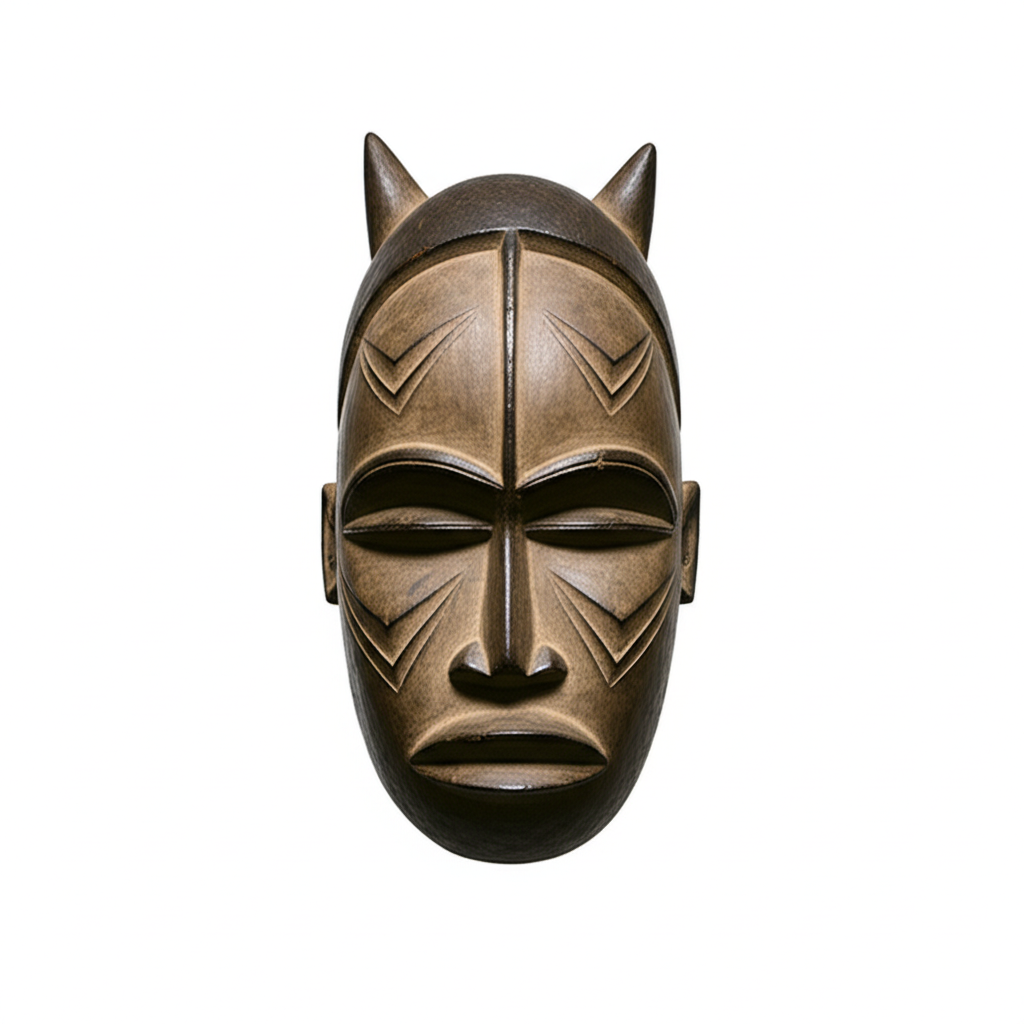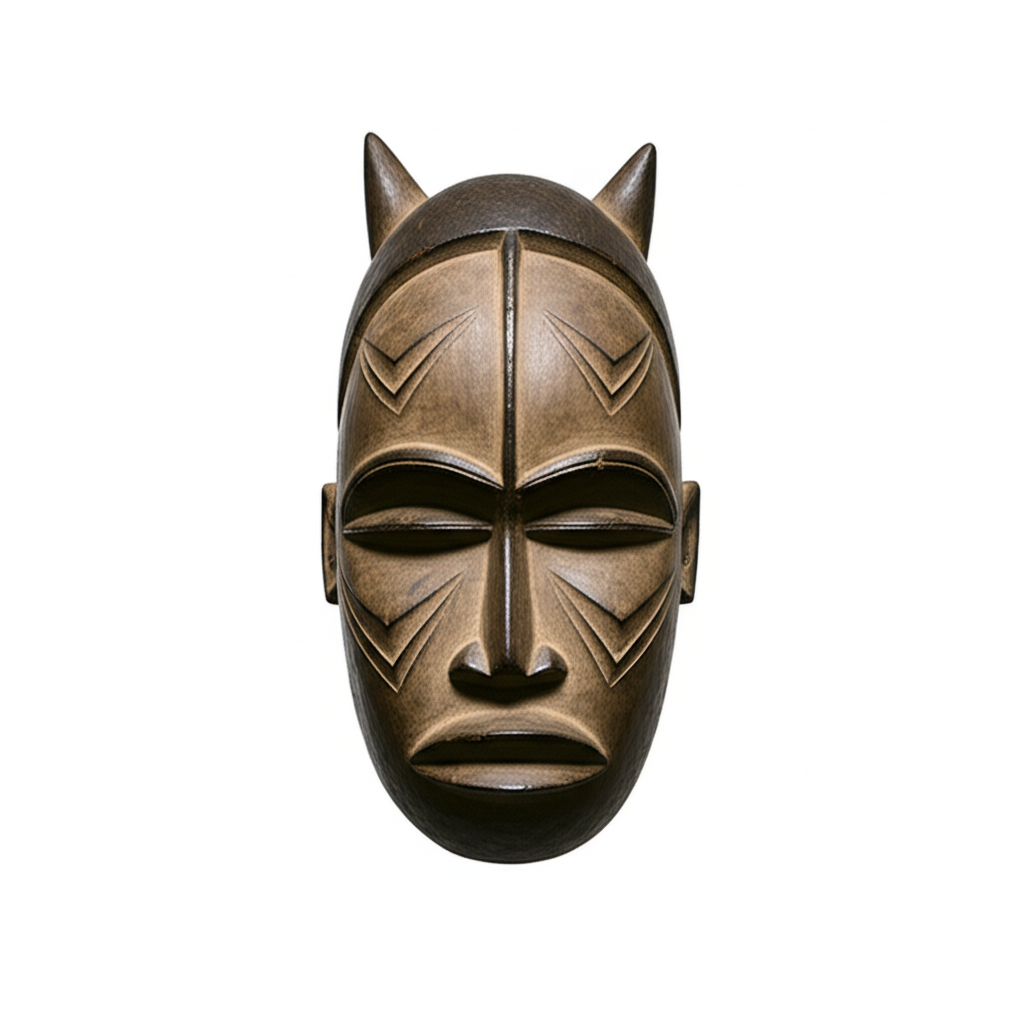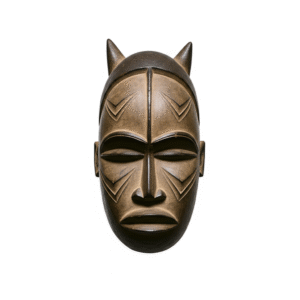Unraveling the Symbolism of African Masks
African masks are far more than mere artistic expressions; they are profound cultural artifacts that communicate a wealth of information through their intricate symbolism.

Gazing upon an African mask, one is immediately struck by its unique artistry – the bold carvings, the vibrant pigments, the often-surreal features. Yet, to perceive these objects merely as aesthetic creations is to miss their profound depth and significance. African masks are powerful cultural artifacts, imbued with layers of spiritual, social, and historical meaning. Each curve, each color, each material choice, and the very being the mask embodies speaks a silent language, a complex system of symbols understood within the community that created it. To truly appreciate these captivating objects is to embark on a journey of decoding this intricate visual vocabulary, revealing the rich tapestry of beliefs, values, social structures, and connections to the spiritual realm that they so eloquently communicate.

Faces of the Spirit World, Masks as Intermediaries
At the heart of many African masking traditions lies the fundamental belief in a vibrant spiritual world that actively interacts with the human realm. Masks often serve as crucial conduits between these two spheres, acting as tangible representations of deities, revered ancestors, powerful spirits of nature, or other supernatural entities that shape the lives of the community. The act of masking is often a sacred one, performed by trained individuals who, through ritual and performance, are believed to undergo a profound transformation. In donning the mask, the wearer transcends their individual identity, embodying the very spirit the object represents. For instance, among the Yoruba people of Nigeria, a diverse pantheon of Orishas (deities) are often represented by distinct masks, each associated with specific powers, responsibilities, and characteristics within the community’s spiritual framework. These masked figures may appear during festivals, ceremonies, or initiations to offer blessings, guidance, or even warnings.
The Language of Form, Decoding Shapes and Features
Beyond the overall representation, the very shape and individual features of a mask carry significant symbolic weight. An elongated face, often seen in masks from various cultures, can symbolize wisdom, maturity, or the presence of ancestral spirits. Conversely, a round face might represent youth, vitality, or fertility. The eyes, often the most arresting feature, convey a range of emotions and spiritual states. Half-closed or serene eyes can signify peace, introspection, or connection to the spiritual realm, as seen in the elegant Senufo masks of Côte d’Ivoire. Wide, alert eyes, as found in some Grebo masks of Liberia, might represent vigilance, power, or a heightened spiritual awareness. A prominent forehead can symbolize intelligence, high status, or spiritual insight. The shape and size of the mouth can also communicate specific traits or pronouncements.
The Palette of Meaning, Symbolism in Color
Color plays a vital role in the symbolic language of African masks, with different hues often carrying deeply ingrained associations. Red, the color of blood, is frequently linked to power, life, vitality, but also aggression and the spiritual world. Black, often associated with death and the ancestors, can also represent the unknown, mystery, maturity, and potent spiritual energy. White is widely symbolic of purity, spirituality, peace, mourning, ancestral spirits, and new beginnings. Yellow or gold often signifies prosperity, wealth, fertility, the life-giving sun, joy, and intellect. Finally, blue and green are frequently associated with spirituality, harmony, life, growth, healing, and the vital forces of the natural world. The deliberate use of these colors in specific patterns and combinations on a mask amplifies its message and reinforces its intended meaning within the cultural context.
The Animal Kingdom Within, Zoomorphic Symbolism
The incorporation of animal representations is a prevalent and powerful aspect of African mask symbolism. Different animals embody specific characteristics, powers, or spiritual qualities that are invoked, honored, or sometimes even warned against through the mask. The graceful antelope, for example, often symbolizes agility, fertility, and the importance of agriculture, as seen in the elegant Chiwara headdresses of the Bambara people of Mali. The mighty buffalo represents strength, power, courage, and sometimes stubbornness. The elephant, with its wisdom, power, memory, and association with royalty, is a recurring motif in certain cultures. The seemingly contradictory crocodile can symbolize both power and danger, as well as adaptability and a connection to water spirits. Various birds are often seen as messengers between the human and spiritual realms, embodying freedom, spiritual connection, or even prophecy. Understanding the specific animal totems and their associated traits within a particular culture is crucial to deciphering the symbolism of zoomorphic masks.

Beyond the Visual, Material and Context
The symbolism of African masks extends beyond their form and color to include the very materials from which they are crafted. Wood, being a product of the forest, often represents life, growth, and a connection to the natural world. The use of metal might signify power, wealth, or status. Shells, particularly cowrie shells in many West African cultures, often symbolize fertility, prosperity, and a connection to water spirits. However, the symbolism of a mask is never truly isolated. It is deeply intertwined with its cultural context – the specific rituals or ceremonies in which it is used, the accompanying music and dance that bring it to life, and the body of knowledge held by the community regarding its meaning and purpose. The interpretation of a mask’s silent language often requires an understanding of the specific traditions, beliefs, and history of the people who created it.
African masks are far more than mere artistic expressions; they are profound cultural artifacts that communicate a wealth of information through their intricate symbolism. The deliberate choices in form, color, material, and representation create a powerful visual language that conveys spiritual beliefs, social values, and historical narratives. By looking beyond the surface aesthetics and delving into the symbolic vocabulary woven into these remarkable objects, we gain a deeper understanding of the rich and diverse belief systems of African communities and appreciate the depth and complexity of their artistic and spiritual expressions. These silent languages continue to speak volumes, offering invaluable insights into the heart and soul of the cultures that brought them into being.







